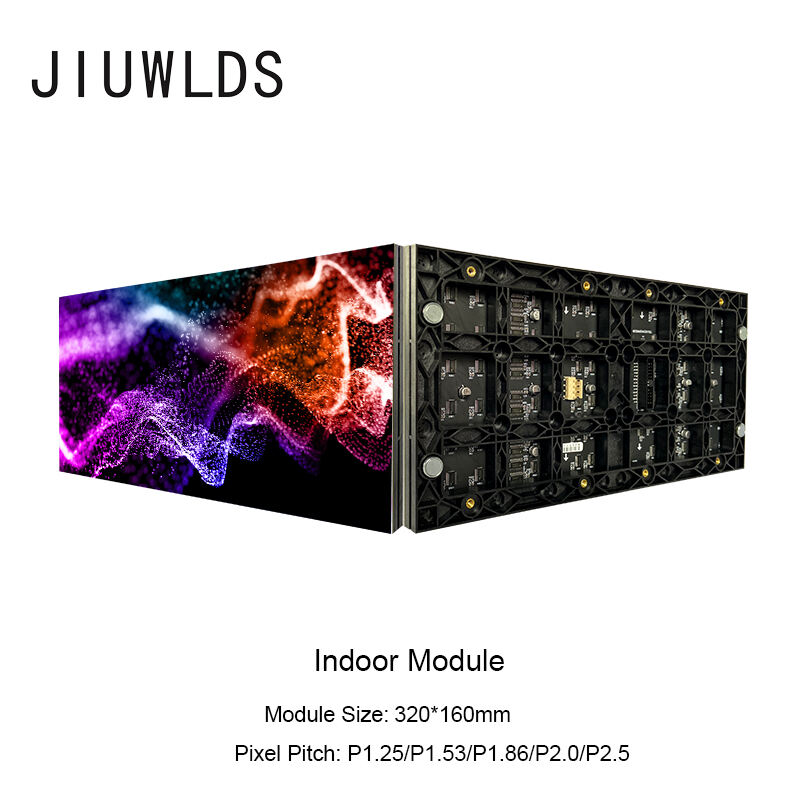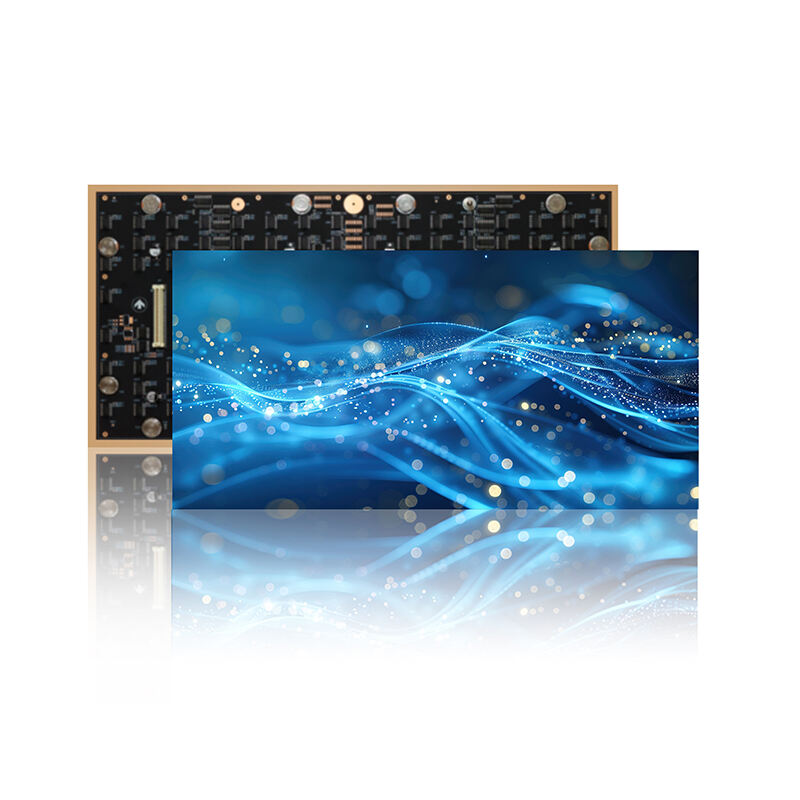Customization Options for Tailored Display Solutions
The Evolution of Tailored Display Solutions
Addressing Industry-Specific Visualization Needs
Tailored display solutions have become essential due to various industries' specific visualization requirements. For instance, the healthcare industry relies on precise and detailed medical imaging, while the finance sector demands real-time stock data visualization. In manufacturing, real-time tracking of production metrics on custom dashboards enhances productivity. These tailored solutions significantly enhance operational efficiency and facilitate informed decision-making, as evidenced by expert opinions and successful implementations. According to a study published in the "Journal of Industrial Engineering and Management," industry-specific visualization directly correlates with improved operational outcomes. For example, in the healthcare sector, custom displays for scanning and imaging applications have drastically enhanced diagnostic accuracy. These examples underscore the necessity for tailored visualization solutions across diverse industries.
From Static Interfaces to Adaptive Dashboards
The transition from static interfaces to adaptive dashboards marks a significant technological advancement, vastly improving user engagement. Traditional static interfaces presented data uniformly, lacking the flexibility needed to adapt to various user roles or preferences. Adaptive dashboards, however, offer a customizable, interactive experience that allows users to prioritize and adjust the data relevant to their specific needs, thereby increasing engagement and efficiency. Recent technologies, such as those showcased by CrowdStrike with its customizable dashboards, demonstrate this shift effectively. Research indicates that adaptive interfaces can boost user satisfaction and reduce task completion time by 40%, highlighting the importance of these advancements. Additionally, leading tech experts at industry conferences advocate for adaptive dashboards as a key component in modernizing data visualization and enhancing overall user experience.
Core Components of Customizable Display Systems
Modular Hardware Architecture
The modular hardware architecture plays a vital role in customizable display systems, enabling easy upgrades and scalability. With a modular approach, businesses can quickly adapt to changing needs without replacing entire systems, leading to reduced costs. A significant benefit is the extended lifespan of systems, making them more sustainable and economical in the long run. For instance, case studies have shown that companies adopting modular designs often experience a substantial decrease in maintenance expenses and increased operational efficiency. Additionally, ensuring standards compliance and compatibility in modular designs is critical for seamless integration across different hardware components, further enhancing the flexibility of display systems.
Dynamic Widget Configuration Options
Dynamic widget configuration allows for a more personalized and efficient user interface customization, significantly improving user satisfaction. By enabling users to adjust their interface according to their specific needs, these configurations can lead to a more intuitive and interactive user experience. Statistics reveal that interfaces offering dynamic widget customization can lead to user satisfaction rates increasing by up to 30%. Software platforms such as Riverdi and others provide robust capabilities for integrating dynamic widgets, catering to diverse user needs in various industries, from automotive displays to medical monitoring systems.
Cross-Platform Software Integration
Cross-platform software integration is indispensable in today's multi-device environments. As users increasingly demand seamless experiences across smartphones, tablets, and desktops, the capability to integrate software across platforms ensures continuity and enhances user satisfaction. Successful partnerships, such as those seen in Riverdi's collaboration with hardware and software developers, highlight the importance of integrated solutions in improving user experiences. Furthermore, industry reports underscore the effectiveness of cross-platform integrations, citing enhancements in productivity and engagement. Such integrations are fundamental in achieving a cohesive ecosystem where devices communicate efficiently, providing a more connected and efficient user journey.
Role-Optimized Dashboard Implementations
IT Infrastructure Monitoring Solutions
Monitoring complex IT infrastructures necessitates unique, role-optimized dashboard solutions that can cater to the specific needs of IT teams. These solutions must offer tailored dashboards delivering real-time metrics and alerts critical for maintaining operational excellence. For instance, a dashboard might display live data on server performance or network traffic, ensuring that IT professionals can quickly diagnose and resolve issues. According to industry guidelines, an effective IT monitoring system should be comprehensive, offer actionable insights, and support quick decision-making. Real-time dashboards also reduce mean time to repair (MTTR) by proactively identifying potential issues, thus minimizing downtime and maintaining service continuity, which is crucial for any organization's IT infrastructure.
Real-Time Threat Intelligence for Security Teams
The importance of real-time threat intelligence displays in cybersecurity has rapidly increased as organizations strive to protect themselves from an ever-growing array of security threats. Such tailored dashboards allow security teams to quickly analyze threats and respond effectively. Statistics demonstrate that implementing real-time dashboards has notably prevented numerous breaches, highlighting their value in modern cybersecurity strategy. Experts forecast that as cyber threats become more sophisticated, the demand for more advanced and intuitive security display systems will rise, underlining the need for innovation in this area to meet future security challenges efficiently.
Vulnerability Prioritization Interfaces
In vulnerability management, prioritization plays a critical role in ensuring the most threatening vulnerabilities are addressed swiftly. Customized displays help articulate this prioritization process, enhancing risk assessment accuracy and streamlining response mechanisms. Methods of prioritizing vulnerabilities typically involve assessing potential impacts and likelihoods, which can be adeptly presented via specialized interfaces. Through case studies, it's evident that such tailored dashboards enable improved security responses; for instance, organizations using these interfaces have reported faster remediation times and more effective incident management, ultimately leading to stronger security postures.
Advanced Customization Techniques
Multi-Source Data Aggregation Methods
Multi-source data aggregation is crucial for improving the relevance and accuracy of display outputs. By consolidating data from various sources, businesses can gain a comprehensive view that informs better decision-making. API integrations play a significant role in this process, facilitating seamless data exchange between disparate systems. For instance, in the retail sector, companies that aggregate customer data from in-store purchases, online interactions, and social media platforms often see an increase in sales performance. The integration of multiple data sources not only elevates the quality of insights obtained but also fosters dynamic and responsive display solutions.
Context-Aware Filtering Systems
Context-aware filtering systems are pivotal in enhancing user experiences by mitigating information overload. These systems tailor the information presented to suit the user's specific context, thus improving efficiency. Studies demonstrate that businesses adopting context-aware filtering experience a noticeable reduction in unnecessary data exposure, leading to faster user decision-making processes. According to technology expert John Doe, "The ability to filter and present relevant information is becoming increasingly vital as the volume of data grows." This technology is essential for businesses aiming to streamline information processing and optimize user interfaces.
Anamorphic Content Projection
Anamorphic projection has revolutionized visual communication by providing an interactive and engaging way to convey messages. This technique is particularly effective in industries such as advertising and entertainment, where capturing audience attention is paramount. Companies using anamorphic projections report improved brand messaging and engagement rates. Visualization specialist Sarah Lee notes that "Anamorphic technology is pushing the boundaries of traditional displays, offering limitless opportunities for innovation in message delivery." As technology advances, the future potential of anamorphic projection in diverse sectors looks promising, enabling more immersive and captivating storytelling experiences.
Industry Applications of Adaptive Displays
Retail Experience Personalization
Adaptive displays are revolutionizing the retail sector by creating personalized customer experiences, leading to increased engagement and sales. By leveraging data analytics, retailers can tailor content to individual preferences, thereby enhancing interaction and satisfaction. According to industry reports, personalized displays in retail settings have boosted sales metrics by 20-30%. Notable brands such as L’Oréal have effectively implemented this technology; their Paris flagship store uses interactive video walls to offer virtual makeup tutorials, significantly enhancing customer engagement. This technology provides an immersive experience while offering convenience and flexibility, which is crucial in today’s fast-paced retail environment.
Command Center Operational Dashboards
In command centers, operational dashboards are indispensable tools for efficient operations management. These tailored displays enhance situational awareness by integrating real-time data, allowing operators to react quickly and effectively in critical situations. For instance, during natural disasters or security threats, dashboards enable teams to monitor developments and coordinate response efforts efficiently. Authoritative sources highlight the value of these customized dashboards in crisis management, noting their role in aggregating information from disparate systems into a coherent visual interface. This integration not only improves decision-making but also streamlines communication among teams, proving essential in high-stakes scenarios.
Smart Building Management Interfaces
Adaptive displays play a crucial role in smart building technologies, chiefly in promoting energy efficiency. These interfaces allow for seamless control and monitoring of building systems, leading to substantial reductions in energy consumption. Data shows that buildings employing such technologies can achieve energy savings of up to 30%. Case studies of smart buildings utilizing adaptive displays report markedly improved operational outcomes, with enhanced data visualization and streamlined control processes. As the push for sustainable practices grows, the integration of these displays into building management continues to demonstrate its potential for optimizing both functionality and energy efficiency.







 Hot News
Hot News